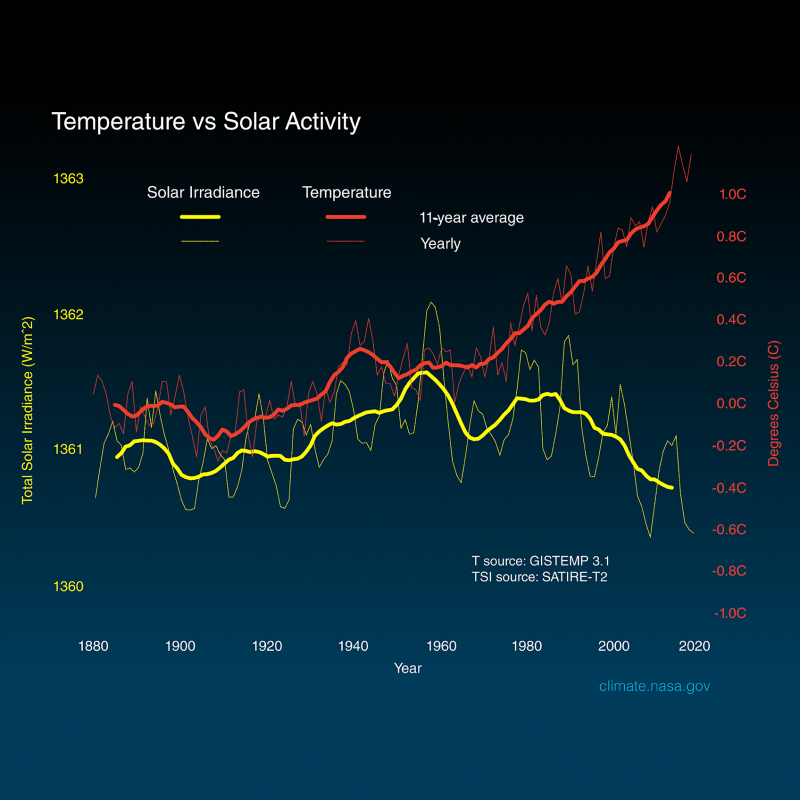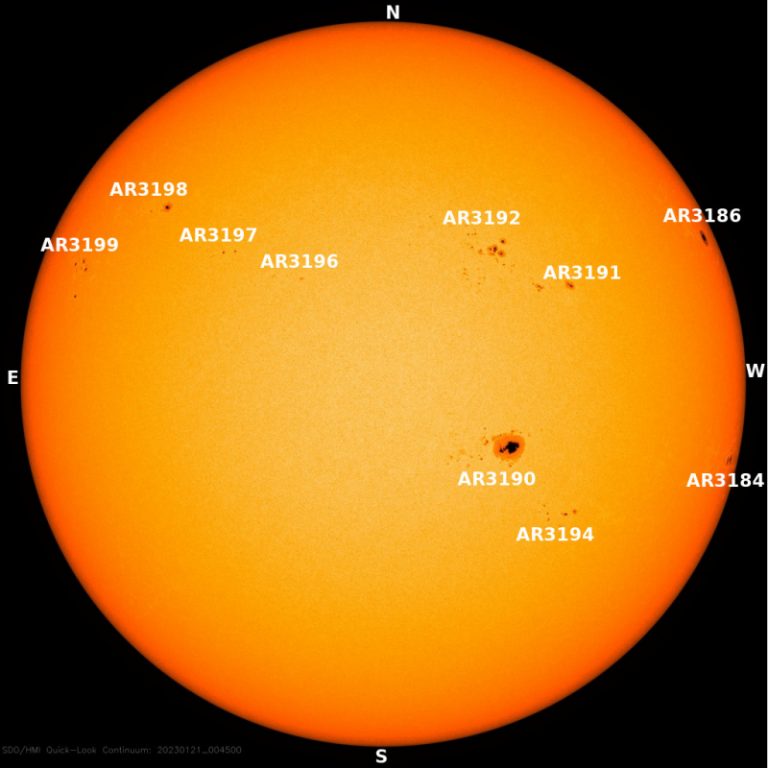

The Sun, as shown by the illustration to the left, can be divided into six layers. From the center out, the layers of the Sun are as follows:
- the solar interior composed of the core (which occupies the innermost quarter or so of the Sun’s radius),
- the radiative zone,
- and the convective zone,
- then there is the visible surface known as the photosphere,
- the chromosphere,
- and finally the outermost layer, the corona.
The energy produced through fusion in the Sun’s core powers the Sun and produces all of the heat and light that we receive here on Earth. The process by which energy escapes from the Sun is very complex. Since we can’t see inside the Sun, most of what astronomers know about this subject comes from combining theoretical models of the Sun’s interior with observational facts such as the Sun’s mass, surface temperature, and luminosity (total amount of energy output from the surface).
All of the energy that we detect as light and heat originates from nuclear reactions deep inside the Sun’s high-temperature “core.” This core extends about one-quarter of the way from the center of Sun (where the temperature is around 15.7 million kelvin (K), or 28 million degrees Fahrenheit) to its surface, which is only 5778 K “cool”.
Above this core, we can think of the Sun’s interior as being like two nested spherical shells that surround the core. In the innermost shell, right above the core, energy is carried outwards by radiation. This “radiative zone” extends about three-quarters of the way to the surface. The radiation does not travel directly outwards – in this part of the Sun’s interior, the plasma density is very high, and the radiation gets bounced around countless numbers of times, following a zig-zag path outward.
It takes several hundred thousand years for radiation to make its way from the core to the top of the radiative zone! In the outermost of the two shells, where the temperature drops below 2,000,000 K (3.5 million degrees F) the plasma in the Sun’s interior is too cool and opaque to allow radiation to pass. Instead, huge convection currents form and large bubbles of hot plasma move up towards the surface (similar to a boiling pot of water that is heated at the bottom by a stove). Compared to the amount of time it takes to get through the radiative zone, energy is transported very quickly through the outer convective zone.
The Sun’s visible surface the photosphere is “only” about 5,800 K (10,000 degrees F). Just above the photosphere is a thin layer called the chromosphere. The name chromosphere is derived from the word chromos, the Greek word for color. It can be detected in red hydrogen-alpha light meaning that it appears bright red. Above the surface is a region of hot plasma called the corona. The corona is about 2 million K (3.6 million degrees F), much hotter than the visible surface, and it is even hotter in a flare. Why the atmosphere gets so hot has been a mystery for decades; SOHO’s observations are helping to solve this mystery.
CREDIT: SOHO (ESA & NASA)




